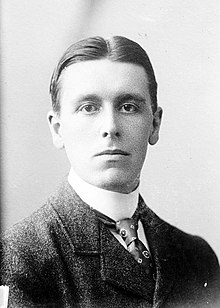Samuel Seabury (judge)
| Samuel Seabury | |
|---|---|

Seabury circa 1913
|
|
| Born |
February 22, 1873 New York City |
| Died | May 7, 1958 (aged 85) East Hampton, New York |
| Occupation | Judge, attorney, politician |
| Employer | New York Court of Appeals |
| Known for | Seabury Commission |
| Spouse(s) | Maud Richey |
| Parent(s) | William Jones Seabury Alice Van Wyck Beare |
| Relatives | Samuel Seabury (1729–1796), Samuel Seabury (1801–1872), ancestors |
Samuel Seabury (February 22, 1873 – May 7, 1958) was an American lawyer and politician from New York. Seabury is famous for dedicating himself to a campaign against the corrupt Tammany dominance of New York City politics. He later presided over the extensive 1930–32 investigations of corruption in the New York City municipal government, which became known as the 'Seabury Hearings'. Seabury became a Georgist after reading Progress and Poverty.
A descendant of several Anglican priests (including the first Episcopal bishop, Samuel Seabury, whose portrait later hung over the fireplace in his library), this Samuel Seabury was the son of William Jones Seabury, professor of canon law (and himself the son of theologian Samuel Seabury), and Alice Van Wyck Beare. On June 6, 1900, this Sam Seabury married Maud Richey (d. 1950), but they never had children.
Seabury graduated from New York Law School in 1893, and was admitted to the bar in 1894. In 1899, he ran on the Independent Labor, Republican, and other minor parties', tickets for the New York City Court but was defeated by the Tammany Hall candidate. In 1901, Seabury ran again for the City Court, this time on the Citizens Union ticket, and was elected to a ten-year term.
In 1905, Seabury ran for the New York Supreme Court (actually a trial court) on the Municipal Ownership League ticket headed by William Randolph Hearst for Mayor, but was defeated. In 1906, he ran again, this time on the Democratic and Independence League fusion ticket headed by Hearst for Governor, and was elected to a fourteen-year term.
...
Wikipedia
